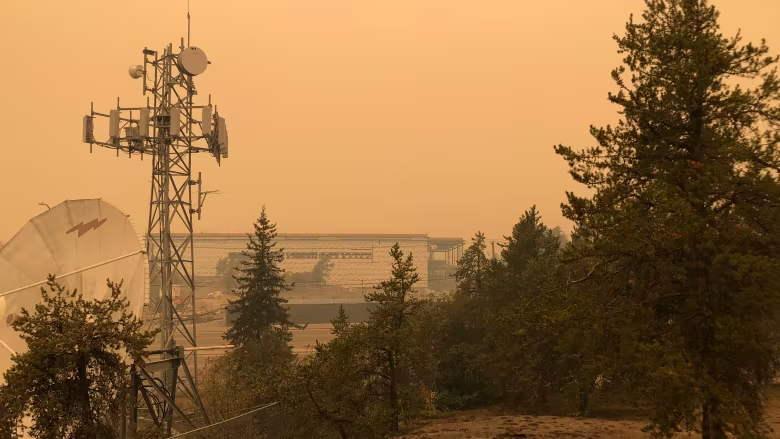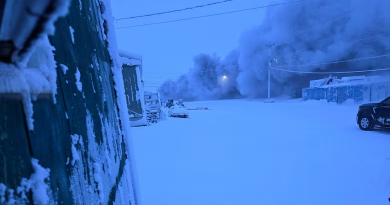N.W.T. facing another summer of drought and another bad wildfire season

· CBC News
Little rain predicted for spring and summer
N.W.T. fire officials are predicting a hot, dry summer with a high risk of wildfires in southern parts of the territory.
At a wildfire briefing Thursday — the first of the season — officials said much of the territory has seen below-average precipitation levels this year, meaning the territory is going into its third year of drought.
On top of that, rainfall is expected to be below average for the spring and summer.
“In general, we’re looking at three or four months of relatively good burning conditions, before we’re expecting to see any kind of significant rain,” said Richard Olsen, manager of fire operations for the territory’s forest management division.
That rain could come from August through October, when the warm and dry El Niño global weather pattern is predicted to shift to the cooler El Niña pattern, bringing with it the potential for a “normal precipitation pattern” for the N.W.T. in the late summer and early fall, Olsen said.
But even then, rainfall in August through October would need to be extreme in order to bring rivers and lakes back up to normal levels, he added.
Watch out in June and July
In the meantime, the territory is gearing up for the dry conditions immediately ahead.
“The drought conditions are really going to drive a lot of what we see here in the spring and in the summer,” Olsen said.
June and July could be particularly severe, he said.
The Beaufort Delta and Sahtu regions are outliers, having seen above-average snow and rainfall this year.
Information on what to expect in 2024 comes after the territory experienced its worst wildfire season on record. In 2023, there were more than 300 wildfires and large swaths of the territory burned. As expected, some of those fires continued to burn underground through the winter.
“Conditions continued to burn throughout the winter season in some areas, largely a reflection of the droughts occurring,” Olsen said. Specifically, the Great Slave Lake area, the southern Sahtu and the Dehcho are experiencing extreme drought, he said.
Preparing ahead
Olsen said the department has made plans to begin staff and firefighter training earlier this year in the southern parts of the territory, such as the Dehcho and South Slave.
“Within southern areas, the snow is almost gone, [so] the communities and surrounding areas around the communities — [the] conditions are getting quickly [to be] in the fire season.”
Reflecting on last year’s fire season, Olsen made mention of the fact that a firefighter died during last year’s operations. Adam Yeadon died in July after being injured while fighting a fire near Fort Liard.
This, Olsen said, has made safety a high priority both in training and in the field. Such measures include promoting a culture of caution, and making sure that mental health, rest and nutrition are properly supported.
Furthermore, firefighters are being trained for enhanced first aid, and in contrast to previous years, when only a few people per team were trained on chainsaw safety, this year the department is trying to train every crew member on it.
Related stories from around the North:
Canada: Yukon government to review this summer’s wildfire evacuations in Mayo, Old Crow, CBC News
Norway: Smoke from Canadian wildfires forecast to reach Norway, The Associated Press
Russia: New NOAA report finds vast Siberian wildfires linked to Arctic warming, The Associated Press
Sweden: High risk of wildfires in many parts of Sweden, including North, Radio Sweden
United States: Wildfires in Anchorage? Climate change sparks disaster fears, The Associated Press



